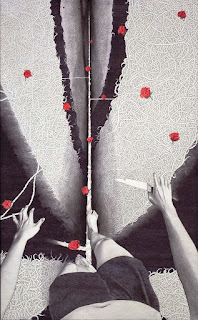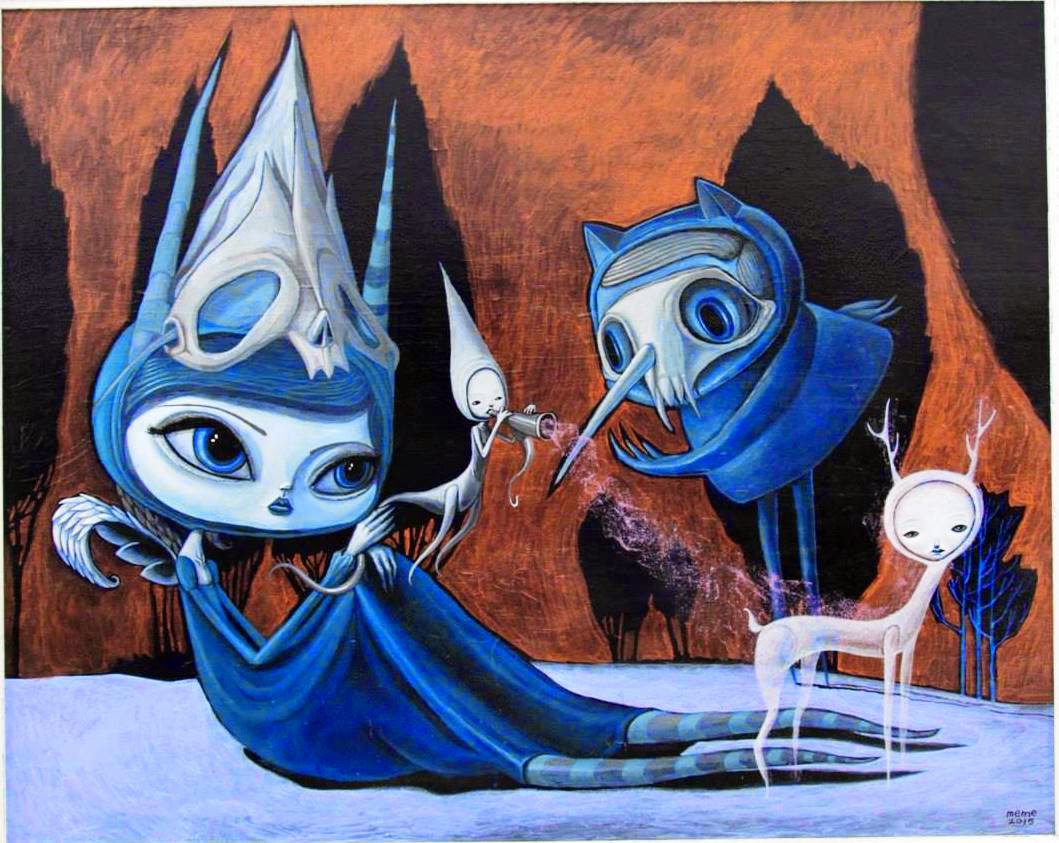Melukis Puisi: Sebuah Pencitraan Puisi-Puisi Pyanhabib @ White Box

In this tribute show to local poet Pyanhabib Rahman, artists are invited to test their “…capability in reading literary texts and transforming them into visual images”, and the results reveal a certain aesthetic symptomatic of the current state in Malaysian visual art. Counting the many animal and coffee pictures, figurative representations make up the majority of exhibits. Even non-painting works depict literal translations, such as Fadhli Ariffin’s vicious video of the artist as a chained dog, and Jamil Zakaria’s tongue-wagging chicken wire sculpture. Among earthy colours and cluttered compositions, Syahbandi Samat’s fine ballpoint drawing stands out with its clarity, ‘Hidup’ a beguiling scene that describes beautifully the verses of its accompanying poem ‘Semadi ii’. Syahbandi Samat - Hidup (2015) “aku imbang diri / atas rentang tali / direntang tanah datar / kemilau mata pisau / menyentak duri mawar” – Semadi ii (24 September 1983, Anak Alam), Pyanhabib When mimicry i
.bmp)

